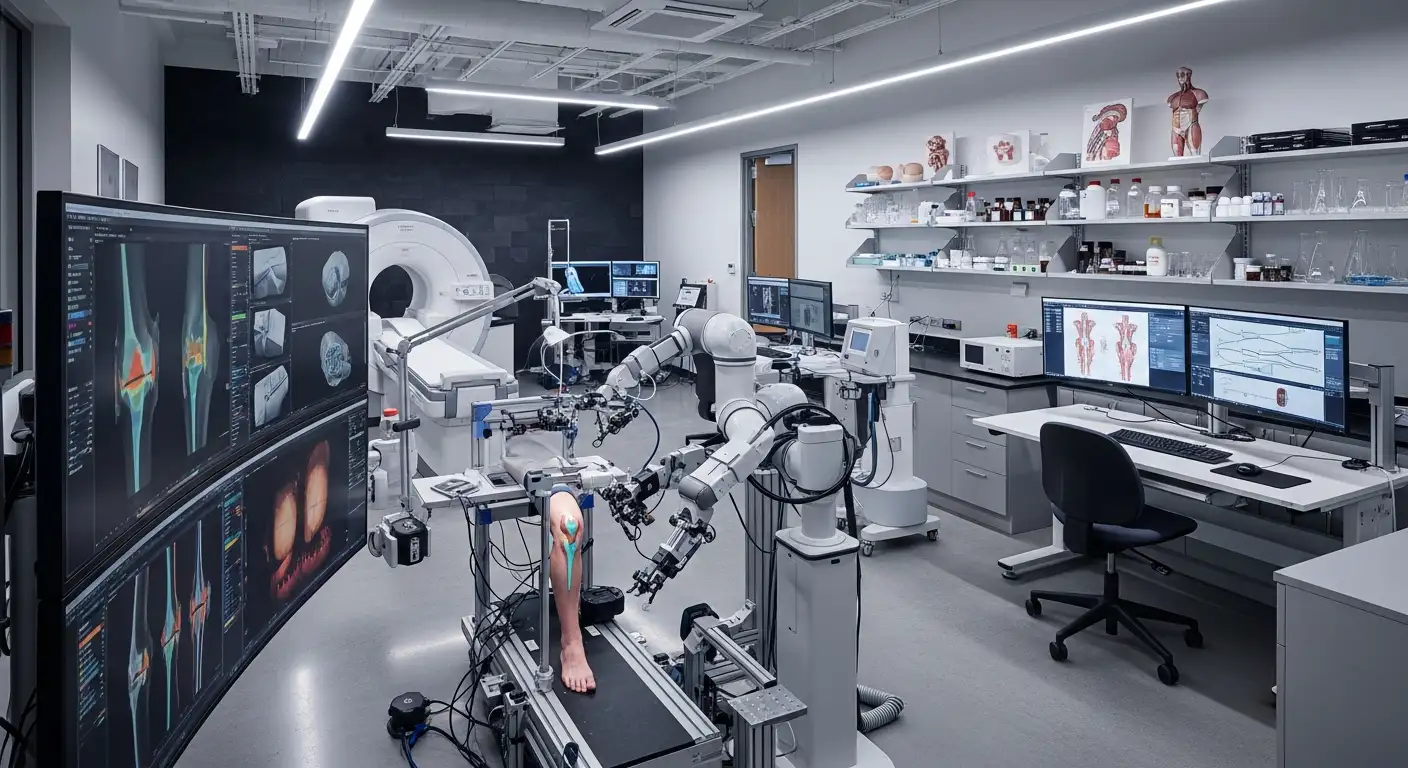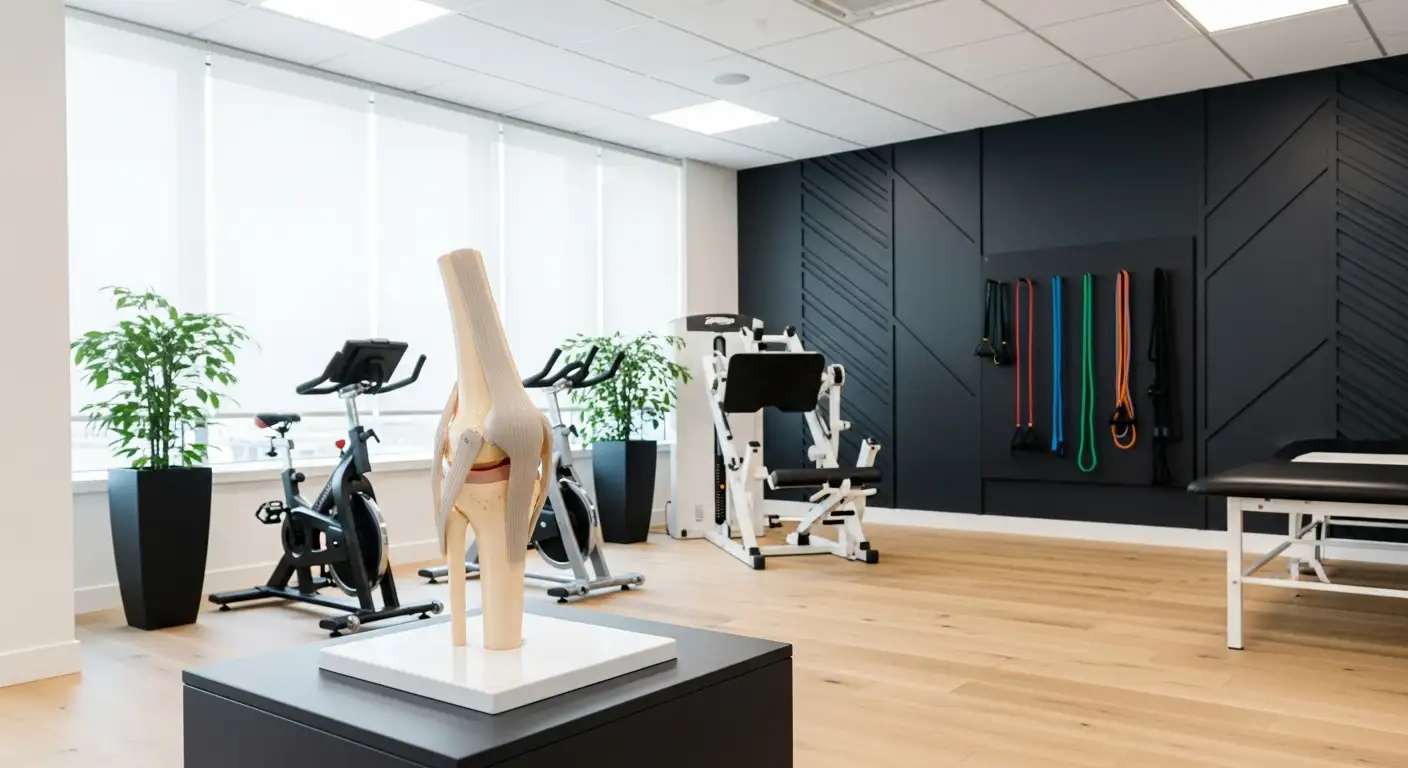Understanding MCL Tears
To comprehend the interplay between MCL and meniscus tears, it's important to first understand the nature of MCL tears. This section will cover the causes, symptoms, and grades of MCL tears.

Causes of MCL Tears
MCL tears are the most common knee ligament injury, accounting for approximately 40% of all knee injuries. These tears often occur due to sudden and forceful turning, twisting, cutting movements, or a direct blow to the outer side of the knee. They are especially common in sports such as skiing, football, basketball, and volleyball. Additionally, MCL injuries can result from slipping on ice or repetitive smaller injuries that gradually cause the ligament to lose its normal elasticity [2].
Symptoms of MCL Tears
When an MCL tear occurs, individuals may experience various symptoms. These can include:
- Pain on the inner side of the knee
- Swelling and tenderness
- Instability or a feeling that the knee is giving way
- Stiffness and difficulty bending the knee
- Bruising around the knee area
It's important to note that the severity of symptoms can vary depending on the extent of the tear. Mild tears may only cause minimal discomfort, while severe tears can result in significant pain and functional limitations.
Grades of MCL Tears
MCL tears are traditionally classified into three grades based on the severity of the injury. These grades help determine the appropriate treatment approach. The grading system for MCL tears is as follows:

The specific grade of the MCL tear is determined through a physical examination and, if necessary, imaging tests such as an MRI.
Understanding the causes, symptoms, and grading system of MCL tears is essential for effectively managing these injuries. In the following sections, we will explore the different treatment options and recovery periods for MCL tears, as well as gain insights into meniscus tears.
Managing MCL Tears
When it comes to managing MCL tears, there are various treatment options available, depending on the severity of the injury. Additionally, the recovery period can vary depending on the extent of the tear and the chosen treatment approach.
Treatment Options for MCL Tears
The treatment approach for MCL tears primarily depends on the grade of the tear. MCL tears are classified into three grades based on severity: grade 1 (mild), grade 2 (moderate), and grade 3 (severe) [1].
- Grade 1 MCL tears, which involve minimal stretching or tearing of the ligament, typically heal within one to three weeks without surgery. Non-surgical treatment options for grade 1 tears may include rest, ice, compression, and elevation (RICE), along with the use of a knee brace for support and stability during the healing process.
- Grade 2 MCL tears involve a partial tear of the ligament and may require a longer recovery period. Treatment for grade 2 tears may include a combination of non-surgical options such as RICE, physical therapy, and the use of a knee brace. In some cases, a period of restricted activity or immobilization may be necessary to allow the ligament to heal properly.
- Grade 3 MCL tears are the most severe and involve a complete tear of the ligament. While many grade 3 tears can heal without surgery, athletes or individuals with other knee injuries may opt for surgical intervention to repair or reconstruct the ligament. Surgical treatment may involve reattaching the torn MCL or using a tissue graft for reconstruction.
It is important to consult with a healthcare professional to determine the most appropriate treatment option based on the individual's specific condition and lifestyle.

Recovery Period for MCL Tears
The recovery period for MCL tears can vary depending on the severity of the tear and the chosen treatment approach. Generally, mild sprains (grade 1 tears) can take about three to four weeks to heal with non-surgical treatment [3]. Moderate tears (grade 2) may require four to six weeks of healing time with proper treatment. Severe tears (grade 3) may take six weeks or longer to heal, and the recovery time may be longer if surgery is required.
For non-surgical treatment, the recovery process often involves a combination of rest, physical therapy, and gradual return to activity. Physical therapy plays a crucial role in strengthening the muscles around the knee and improving stability. It can help restore range of motion, reduce pain, and prevent future injuries. Following a physical therapy plan as prescribed by a healthcare professional is essential for a successful recovery.
In cases where surgery is required, the recovery time is generally longer. It can take between nine and 12 months to fully recover from MCL reconstruction surgery, depending on any associated knee injuries [2]. The rehabilitation process after surgery typically involves a series of progressive exercises guided by a physical therapist to regain strength, stability, and range of motion.
It's important to note that the recovery period can vary from person to person, and adherence to the prescribed treatment plan and rehabilitation exercises is key to achieving optimal recovery outcomes. Regular follow-up appointments with a healthcare professional will help monitor progress and make any necessary adjustments to the treatment plan.
Insights into Meniscus Tears
Meniscus tears can be a common knee injury, often resulting from acute trauma or degenerative changes over time. These tears can occur at any age, with younger individuals, especially athletes, more likely to experience sudden meniscus injuries, while older individuals are more prone to meniscus damage related to degeneration from wear-and-tear [5]. Understanding the causes and recognizing the symptoms of meniscus tears is crucial in seeking appropriate treatment.
Causes of Meniscus Tears
Meniscus tears can result from various factors, including acute trauma and degenerative changes. Acute tears frequently occur during sports activities, either through contact or non-contact injuries like pivoting or cutting [4]. These tears often coincide with other knee injuries, such as anterior cruciate ligament (ACL) tears. On the other hand, degenerative tears tend to occur in older individuals, as aged and worn tissue becomes more susceptible to tears over time.
Symptoms of Meniscus Tears
Recognizing the symptoms of a meniscus tear is essential for timely diagnosis and treatment. Common symptoms include:
- A popping sensation at the time of injury.
- The ability to walk immediately after the injury.
- Stiffness in the knee joint.
- Swelling that may develop gradually over 2 to 3 days.
To assess for a meniscus tear, healthcare professionals often perform the McMurray test. During this test, the knee is bent, straightened, and rotated to assess for pain, clicking, or other signs of a meniscus tear.
It's important to note that the severity of symptoms can vary depending on the type and location of the tear. Some individuals may experience intermittent pain and discomfort, while others may have persistent pain and functional limitations. If you suspect a meniscus tear, it's crucial to consult with a healthcare professional for an accurate diagnosis and appropriate treatment options.
Understanding the causes and symptoms of meniscus tears is the first step in effectively managing and treating this knee injury. In the next section, we will explore the non-surgical and surgical treatment options available for meniscus tears.
Treating Meniscus Tears
When it comes to treating meniscus tears, the approach can vary depending on the severity and location of the tear. Treatment options for meniscus tears include non-surgical methods and surgical interventions.

Non-Surgical Treatment for Meniscus Tears
In many cases, non-surgical treatment methods can effectively manage meniscus tears, particularly for smaller tears or tears associated with the wear and tear of age. Non-surgical treatment options may include:
- Rest and Activity Modification: Limiting activities that aggravate the knee and allowing time for the tear to heal.
- Physical Therapy: Engaging in specific exercises and stretches to strengthen the surrounding muscles and improve knee stability. Physical therapy is crucial for speeding up recovery from surgery and healing minor meniscus tears without surgery [6].
- Pain Management: Over-the-counter pain relievers, such as acetaminophen or nonsteroidal anti-inflammatory drugs (NSAIDs), may help alleviate pain and reduce inflammation.
- Bracing: Wearing a knee brace can provide support and stability to the knee joint, helping to relieve pain and prevent further damage. To find the right knee brace for your specific needs, you can refer to our article on knee brace for meniscus tear reviews.
Non-surgical treatment typically requires a recovery period of about 6 to 8 weeks, and physical therapy is often a key component to achieving a good outcome. However, it's important to note that not all meniscus tears can be effectively treated without surgery.
Surgical Options for Meniscus Tears
Surgery may be necessary for some meniscus tears to heal the meniscus and restore the knee's range of motion. Meniscus tear surgery is a common procedure, with approximately 850,000 surgeries performed each year in the United States alone [5]. The two main surgical options for meniscus tears are:
- Meniscectomy: This procedure involves removing the torn portion of the meniscus. Recovery time after a meniscectomy is typically 3 to 6 weeks. Although a meniscectomy can provide short-term relief, individuals with a large unrepairable meniscal injury may be at a higher risk of developing knee arthritis in the long term [6].
- Meniscus Repair: In cases where the tear is in a repairable location and the tissue can be preserved, a meniscus repair may be performed. This procedure aims to sew or anchor the torn edges of the meniscus together, allowing it to heal naturally. Recovery time after a meniscus repair is longer, typically ranging from 3 to 6 months.
The decision between surgical and non-surgical treatment options depends on various factors, including the type and location of the tear, the individual's activity level, and their overall health. It is essential to consult with a healthcare professional to determine the most suitable treatment approach for an individual's specific meniscus tear.
By considering the severity of the meniscus tear and exploring non-surgical and surgical treatment options, individuals can work towards restoring knee function and alleviating pain associated with meniscus tears. Remember, each case is unique, and the treatment plan should be tailored to the individual's needs and guided by the advice of a medical professional.
Comparing MCL and Meniscus Tears
When it comes to knee injuries, two common conditions that can occur are MCL tears and meniscus tears. While both types of injuries can cause pain and discomfort, there are some key differences to consider when comparing their recoveries and treatment approaches.
Recovery Comparison
The recovery time for MCL tears can vary depending on the severity of the tear. Grade 1 (mild) MCL tears usually heal within one to three weeks, while grade 2 (moderate) tears generally take four to six weeks to heal with proper treatment. Grade 3 (severe) tears, on the other hand, may take six weeks or more to heal with treatment. It's important to note that these timeframes are approximate and individual recovery times may vary.
In contrast, the recovery time for meniscus tears can also depend on various factors, including the location and severity of the tear, as well as the chosen treatment approach. Small tears may have a shorter recovery period, while larger or complex tears may require a longer healing time. Recovery from a meniscus tear can range from a few weeks to several months, and in some cases, surgical intervention may be necessary for a complete recovery.
Surgical vs Non-Surgical Approaches
In many cases, MCL tears can be managed without surgery due to the ligament's good blood supply, which aids in the healing process. Non-surgical treatment options for MCL tears typically involve rest, ice, compression, and elevation (RICE), along with physical therapy to strengthen the surrounding muscles and improve stability. Most MCL tears can recover without surgery, especially in individuals who are not professional athletes.
However, professional athletes or individuals with severe MCL tears or other knee injuries may opt for surgical intervention to address the tear. Surgery for MCL tears can involve reattaching the torn ligament or reconstructing it using a tissue graft.
Similarly, most meniscus tears can be treated without surgery, particularly if the tear is small and on the outer edge of the meniscus. Non-surgical treatment options for meniscus tears may include rest, physical therapy, pain management, and the use of knee braces [7]. However, if the tear is large, causes persistent symptoms, or significantly affects knee function, surgical intervention may be recommended. Surgical options for meniscus tears can include partial meniscectomy (removal of the torn portion) or meniscus repair (suturing the torn edges) [7].
It's important to consult with a healthcare professional to determine the most suitable treatment approach for an MCL or meniscus tear. They will assess the specific characteristics of the injury and consider individual factors to guide the decision-making process.
By understanding the recovery comparison and the potential for surgical or non-surgical approaches, individuals can make informed decisions about their treatment options for MCL and meniscus tears. Remember, each case is unique, and an accurate diagnosis from a medical professional is crucial for developing an appropriate treatment plan.
Preventing Knee Injuries
Taking steps to prevent knee injuries is crucial for maintaining optimal knee health and reducing the risk of conditions like MCL and meniscus tears. By implementing injury prevention strategies and emphasizing the importance of physical therapy, individuals can proactively protect their knees.
Injury Prevention Strategies
To minimize the risk of knee injuries, consider the following strategies:
- Proper Warm-up: Prior to engaging in physical activities or sports, it's important to warm up adequately. Performing dynamic stretches, light aerobic exercises, and joint mobilization exercises can help prepare the muscles and joints for activity.
- Strengthening Exercises: Strengthening the muscles around the knee, including the quadriceps, hamstrings, and calves, can provide stability and support to the knee joint. Incorporate exercises like squats, lunges, leg presses, and calf raises into your workout routine.
- Maintain a Healthy Weight: Excess weight can put additional stress on the knees, increasing the risk of injury. Maintaining a healthy weight through regular exercise and a balanced diet can help reduce this burden.
- Proper Technique: Whether participating in sports or performing physical activities, it's important to use proper technique and form. Seek guidance from a coach, trainer, or physical therapist to ensure you are using the correct technique to minimize stress on the knees.
- Wear Protective Gear: When engaging in sports or activities with a higher risk of knee injury, such as football, basketball, or skiing, wearing appropriate protective gear is essential. This may include knee braces, supportive footwear, or other protective equipment.
Importance of Physical Therapy
Physical therapy plays a crucial role in preventing knee injuries and promoting overall knee health. It involves exercises and techniques aimed at improving strength, flexibility, balance, and stability in the knee joint.
Physical therapists can assess your specific needs and develop a personalized exercise program to address any underlying weaknesses or imbalances. They may incorporate exercises such as leg presses, squats, lunges, balance exercises, and agility drills to improve knee strength and stability.
In addition to exercises, physical therapists can provide education on proper body mechanics and movement patterns to help reduce the risk of knee injuries. They may also teach techniques for landing safely and pivoting to minimize stress on the knees during sports or activities.
Furthermore, physical therapists can guide individuals in the correct use of knee braces and other supportive devices, providing recommendations for knee braces tailored to specific needs, such as knee brace for meniscus tear reviews or best knee brace for torn acl and meniscus.
By incorporating physical therapy into your routine, you can enhance the strength and stability of your knee joint, reducing the risk of injuries like MCL and meniscus tears. If you experience any knee pain or discomfort, it is important to consult with a healthcare professional or physical therapist for an accurate diagnosis and appropriate treatment.
Remember, prevention is key when it comes to knee injuries. By implementing injury prevention strategies and prioritizing physical therapy, you can take proactive steps towards maintaining healthy and resilient knees.
References
[1]: https://my.clevelandclinic.org/health/diseases/21979-mcl-tear
[2]: https://www.ucsfhealth.org/conditions/mcl-tear
[3]: https://www.massgeneralbrigham.org/en/patient-care/services-and-specialties/sports-medicine/conditions/knee/mcl-injuries
[4]: https://orthoinfo.aaos.org/en/diseases--conditions/meniscus-tears/
[5]: https://www.healthline.com/health/osteoarthritis/knee-pain/meniscus-tear-recovery-time-without-surgery
[6]: https://www.webmd.com/pain-management/knee-pain/meniscus-tear-injury




